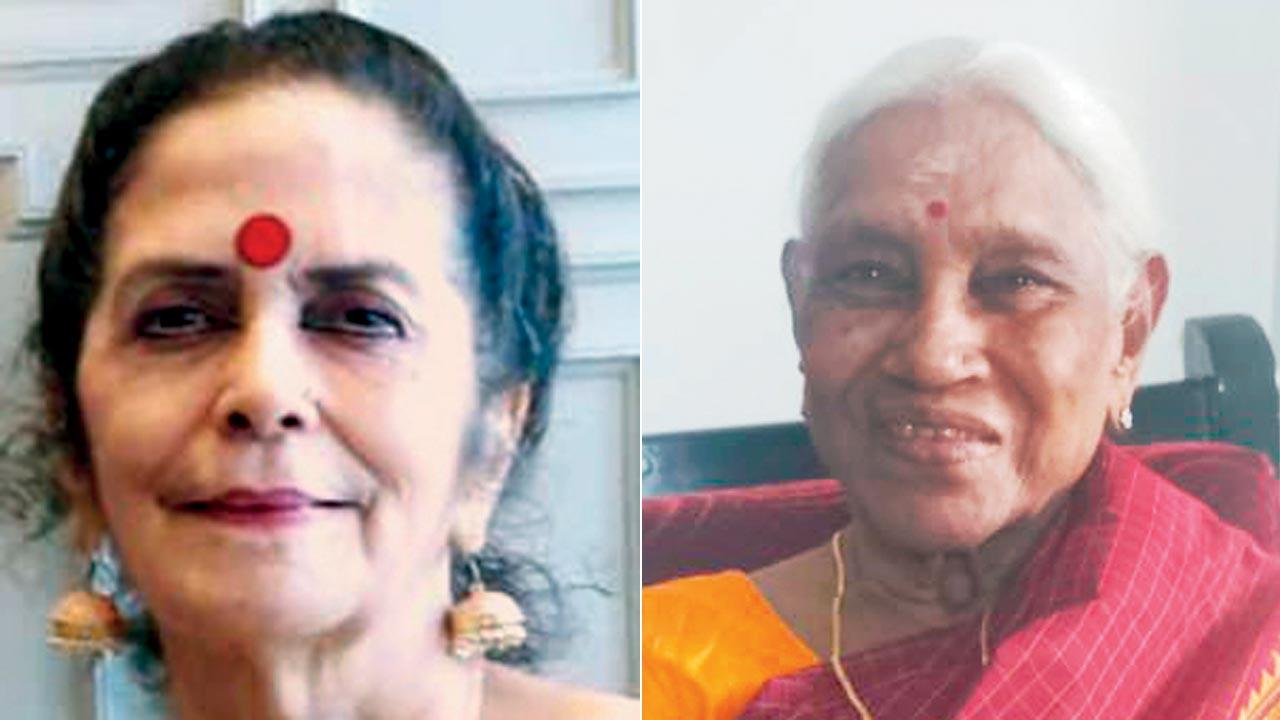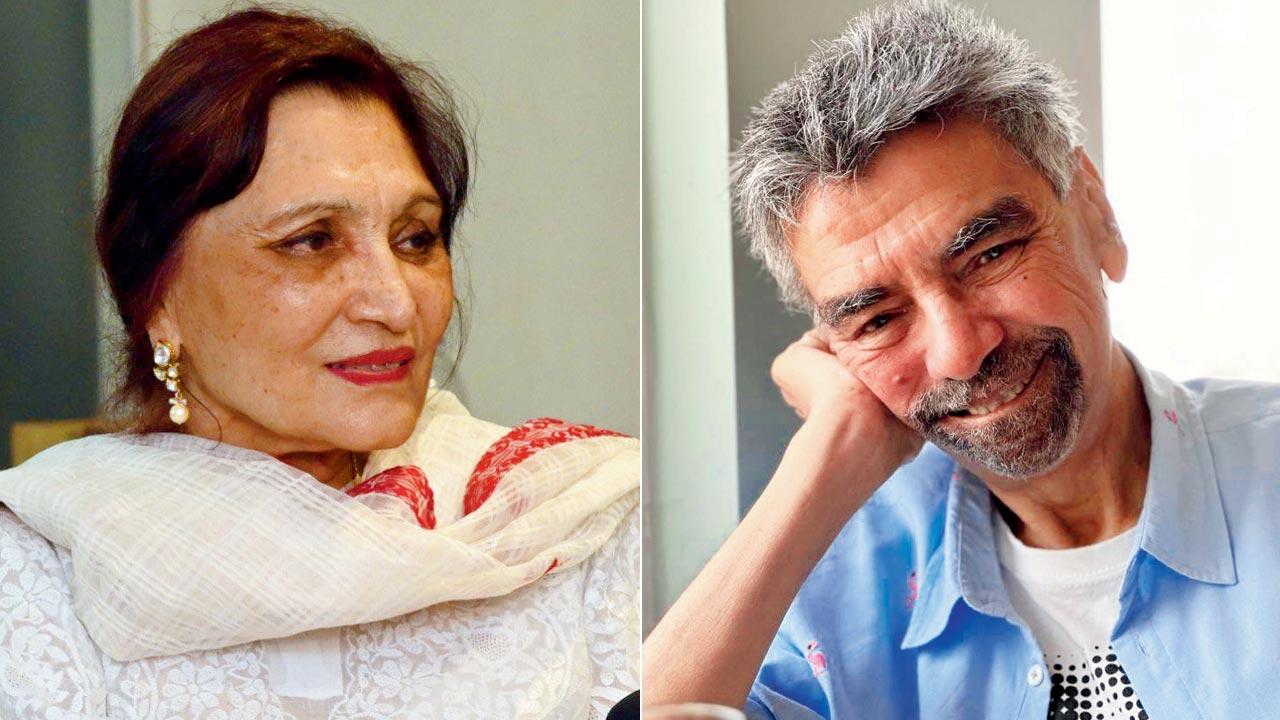Industry insiders, team members and readers share memories of Femina’s longest serving editor who passed away on September 29, hailing the quiet revolution in women’s journalism she led

Under Vimla Patil’s editorship, Femina brought out issues on subjects like dowry, women’s inheritance rights and divorce. She also encouraged women in their careers, say her proteges
In 1978, Shailaja Ganguly started freelancing for Femina after she picked up the Rajika Kripalani Memorial Young Journalist Award. The magazine’s editor, Vimla Patil, had been one of the judges. She was offered a job soon after by the editor when she managed to hand in a story that another writer had failed to deliver on. The journalist, writer, voiceover artiste and anchor credits the decade she spent at the magazine under Patil’s editorship for much of her triumphs in the world today.
“One never felt throttled or subdued in any way, one could speak one’s mind and had the freedom to write and express one’s views. The open-mindedness with which [Patil] accepted my ideas in many areas gave me the confidence that I have what it takes in the world outside,” Ganguly observes, recalling the freedom she and other writers had to exercise their writing chops for other in-house publications like Evening News or Filmfare.
ADVERTISEMENT
![This week, Femina shared covers, brought out by the magazine [during Patil’s time], showcasing “her bold vision, feminist spirit, and commitment to highlighting stories that mattered”. Pics/Instagram](https://images.mid-day.com/images/images/2024/oct/Vimla-Pati-oldoct-b_e.jpg) This week, Femina shared covers, brought out by the magazine [during Patil’s time], showcasing “her bold vision, feminist spirit, and commitment to highlighting stories that mattered”. Pics/Instagram
This week, Femina shared covers, brought out by the magazine [during Patil’s time], showcasing “her bold vision, feminist spirit, and commitment to highlighting stories that mattered”. Pics/Instagram
“It was from Femina that one began doing freelance broadcasting about women’s concerns on radio, and anchoring programmes on television, and all of this with her support. [Patil understood] that one needed to find oneself in different ways,” says Ganguly, adding that her first anchoring experience was with Hindustani classical vocalist Ashwini Bhide in a concert organised by Femina.
“Femina was like an extremely rewarding runway from which I found my wings and soared,” Ganguly recalls. “I owe a lot to it, especially because it was dealing with [the idea of] a woman wanting to find herself. And we were all women trying to find ourselves. Being associated with such a reputed journal at a very decisive time in women’s journalism has stood me in good stead.”
 Shailaja Ganguly and Rajam Thirumalai
Shailaja Ganguly and Rajam Thirumalai
In the decade that Ganguly worked with the magazine, she worked on “stories about heroines of different kinds”. “These were stories of women who were like phoenixes, regenerating themselves from ashes and creating lives for themselves and for many other women,” she observes. She recalls working on articles on dancers Sonal Mansingh and Sudha Chandran who overcame physical adversities; and on self-taught educationist and social activist Rukmabai Tallur who set up the Punyatama Prabhakar Sharma Seva Mandal (PPSSM) for the improvement of underprivileged lives in remote tribal and rural areas. “While we did not move away from the basics, which were much loved, like the cookery section, feminism was right there on the scene in the kinds of stories that we started publishing,” says trying.
Then there were the ancillary activities, work that was done “across the table” with people who came into the office for counselling and advice. Ganguly recalls an instance when an upwardly mobile gentleman had, respecting his parents’ wishes, married a girl from the village, who found herself struggling to cope with life in Bombay. “He brought her to us and, believe it or not, we taught her to drape a saree and put on make-up, and even got her admitted to a colloquial English class,” she tells us, pointing to how Femina operated as a “friend” with the spirit of women supporting other women.
 Sathya Saran and Khalid Mohamed
Sathya Saran and Khalid Mohamed
Patil routinely promoted young entrepreneurs in Femina’s pages and ran offers on their products, says Ganguly, adding, “It made the woman at home happy to get something which was marketed by Femina at a discount, made her feel like she had a family out there.”
There were also the models who were groomed for photoshoots, the Miss India contest and other elite international competitions under Patil’s watchful eye. Model Nandini Sen who met the editor at the age of 16 recalls shooting for a Femina cover in Belgrade with Veena Prakash, Protima Bedi and Kalpana Iyer. “Mrs Patil provided a stage for us to shine. She was always looking to send her girls abroad to help them make a name in the international beauty industry,” she says.
 Nona Walia, journalist and author; (right) Madhavan Narayanan, senior journalist
Nona Walia, journalist and author; (right) Madhavan Narayanan, senior journalist
For Sathya Saran, who also met Patil for the first time after winning the Rajika Kripalani Memorial Young Journalist Award, the editor was someone who “staked her flag in women’s journalism and made sure that it kept flying”.
Saran, who joined Patil’s team in 1979 and ultimately took over as editor of the magazine after her in 1993, remembers the latter’s “astounding ability to look beyond what we knew. She would ask questions”.
“Here was someone consciously trying to help women. She promoted women in their careers, especially in the glamour field,” says Saran. The articles Patil assigned writers “were ahead of their time,” adds Saran, who remembers working on one about who owns the money a woman earns. “While other magazines were talking about how to keep your mother-in-law happy, Femina was talking about how—while you should respect your mother-in-law—you were your own person. You didn’t have to hand over your money to her. I don’t think we said it in so many words, but we implied it by doing such an article.”
Like Ganguly, Saran remembers Patil being appreciative of the fact that they wanted to do things beyond work, and was keenly interested when Saran and team member Sohaila Kapur started training under classical singer Dhondutai Kulkarni. The Times Group, Saran tells us, then had a rule where staffers could write for the various in-house publications but couldn’t earn more than a total of R5,000 for their contributions. “I would hit my ceiling and then started writing under another name. Mrs Patil knew it and was tolerant of it. Our salary was around R1,000. So, to earn another R5-6,000 was not a bad thing. A lot of editors are like autocrats, [but not her].”
Saran also shares how Patil was a comforting presence in the office and would end up counselling staffers who sought her advice. Patil’s secretary Rajam Thirumalai speaks of this affable nature: “Vimla was a towering personality at the Times of India and yet helpful and generous. I was a simple girl from a village in Tamil Nadu. She welcomed me with open arms and groomed me patiently. She taught me how to speak, the decorum to deal with VIPs, and took me with her everywhere. I met [politicians] SB Chavan, YB Chavan, Sharad Pawar and textile tycoons like Suneet Khatau. Sameer Jain called me Vimla’s Girl Friday.”
Her sociability with her team was something Saran says she attempted to carry forward during her own tenure as editor. “She was also very rooted in a sense of Indianness, which I liked and kept [for the magazine]. I felt that we needed to be Indian but also needed to be aware that the Indian woman is no longer at home, she’s working in corporate spaces, so we needed to start thinking on those lines.”
Film critic, screenwriter and director Khalid Mohamed who occasionally contributed articles to the magazine, recalls how Patil was always ready for a chat and advice. While she occasionally instructed him to refrain from overwriting and to not be afraid to use ‘I’ and ‘me’ in sentences, when he titled his review of the Jackie Shroff film Hero—about an angry fighter prone to singing—“Raging bulbul”, she sent him a note to let him know that she had enjoyed it.
Her identity was so [firmly] tied to the magazine, Mohamed tells us, that she had once ordered furniture that the shop had dropped off at the Femina office.
“She was at once traditional and a feminist, a gentle reformer, a revolutionary without the fuss,” Madhavan Narayanan, who started as a trainee with The Times Group, tells us. Narayanan, a senior journalist, columnist and editor, went on to contribute articles for Femina on athletics, environment, and other subjects considered outside the traditional woman’s domain.
Journalist and author Nona Walia who was one of the first people to post about Patil’s passing, remembers her mother reading Patil’s writing from the magazine out loud to her when she was too young to read herself. Women’s magazines of that era ignited a soft revolution, gently nudging women towards modernity, feels Walia. “They brought out issues on subjects like dowry, women’s rights of inheritance, domestic violence and divorce. In the ’70s, not many women would go ahead and file divorce cases. So, in a way, they were breaking through the orthodoxy in society and bringing in gender equality. Vimla Patil was at the forefront of these changes,” Walia observes. “Patil laid the foundation for a free pen. Femina today is so Bollywood-oriented but at that time, its covers featured ‘women of substance’. You could relate to those women because they were the ones who, despite the challenges, were making it big in their own way.”
 Subscribe today by clicking the link and stay updated with the latest news!" Click here!
Subscribe today by clicking the link and stay updated with the latest news!" Click here!







